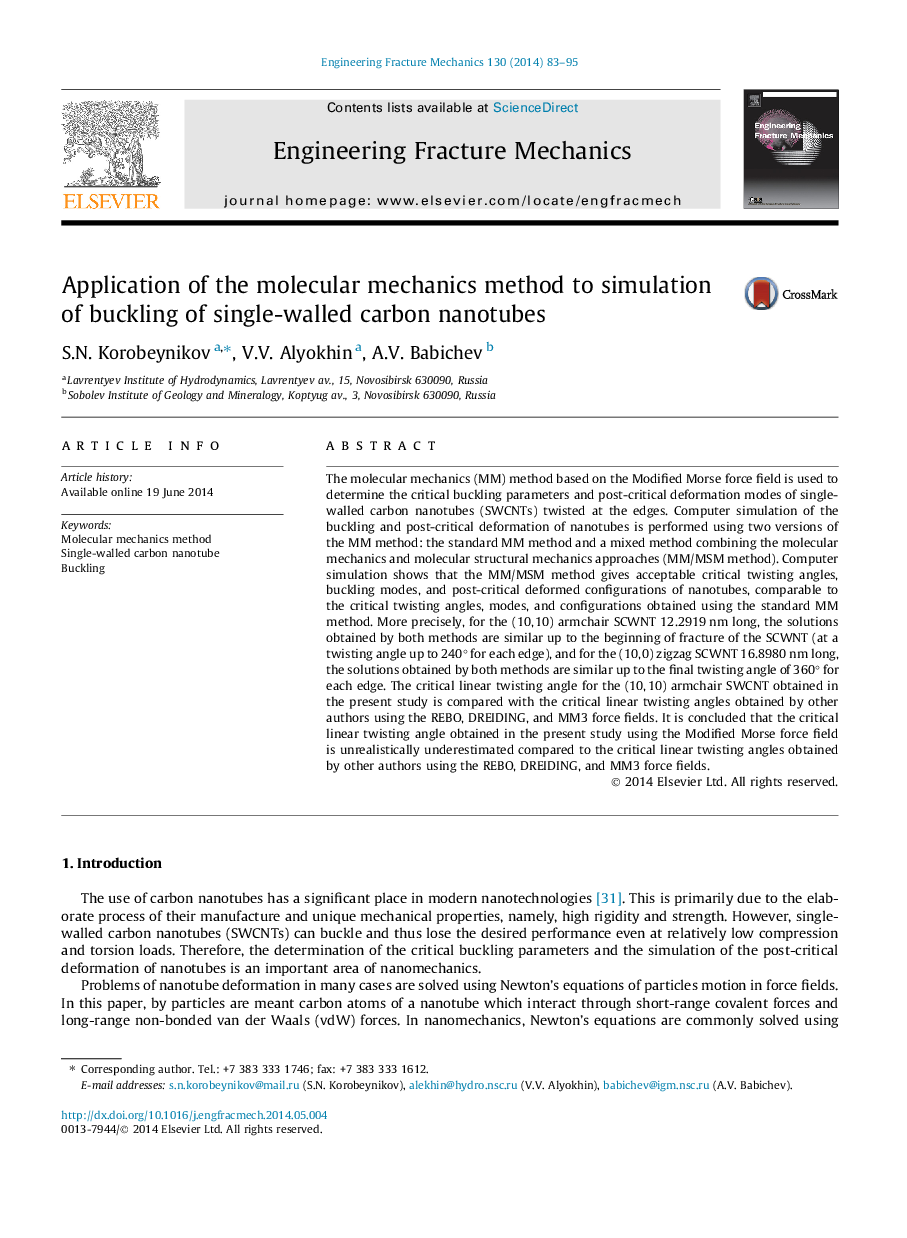| Article ID | Journal | Published Year | Pages | File Type |
|---|---|---|---|---|
| 770519 | Engineering Fracture Mechanics | 2014 | 13 Pages |
•We simulate buckling of SWCNTs twisted at the ends.•The molecular mechanics method is used.•We use covalent force energies for simulating deformation of SWCNTs.•To preserve self-intersection of SWCNTs walls, we account vdW non-covalent forces.•We compare computer simulation results using two versions of the MM method.
The molecular mechanics (MM) method based on the Modified Morse force field is used to determine the critical buckling parameters and post-critical deformation modes of single-walled carbon nanotubes (SWCNTs) twisted at the edges. Computer simulation of the buckling and post-critical deformation of nanotubes is performed using two versions of the MM method: the standard MM method and a mixed method combining the molecular mechanics and molecular structural mechanics approaches (MM/MSM method). Computer simulation shows that the MM/MSM method gives acceptable critical twisting angles, buckling modes, and post-critical deformed configurations of nanotubes, comparable to the critical twisting angles, modes, and configurations obtained using the standard MM method. More precisely, for the (10, 10) armchair SCWNT 12.2919 nm long, the solutions obtained by both methods are similar up to the beginning of fracture of the SCWNT (at a twisting angle up to 240° for each edge), and for the (10, 0) zigzag SCWNT 16.8980 nm long, the solutions obtained by both methods are similar up to the final twisting angle of 360° for each edge. The critical linear twisting angle for the (10, 10) armchair SWCNT obtained in the present study is compared with the critical linear twisting angles obtained by other authors using the REBO, DREIDING, and MM3 force fields. It is concluded that the critical linear twisting angle obtained in the present study using the Modified Morse force field is unrealistically underestimated compared to the critical linear twisting angles obtained by other authors using the REBO, DREIDING, and MM3 force fields.
